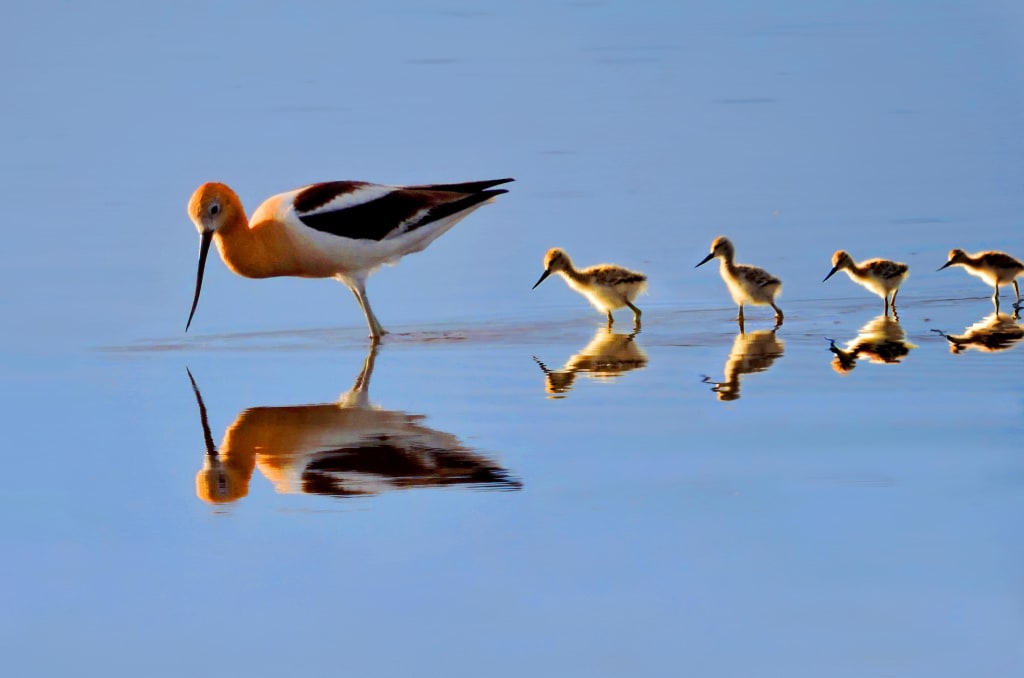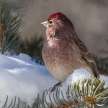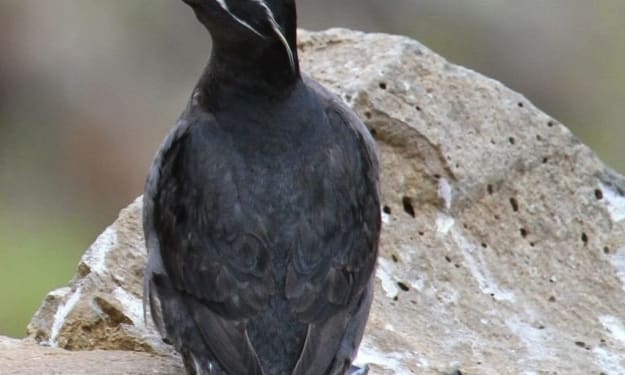
The American avocet (Recurvirostra americana) is a largewader of Recurvirostridae, a family of avocets and stilts.In shallow water or mud flats, this avocet spends much of his time forging, sometimes sweepinghis bill through water from side to side while chasing his prey to crustaceans and insects.The American avocet is a genus within the Charadriiformes Order of shorebirds, gulls, alcids, plovers, oyster-catchers, and auks.The Family Recurvirostridae consists of stelts and avocets. The American avocet is one of four species of avocet; the Andean avocet, the Pied avocet and the Red-necked avocet are the three remaining varieties in the genus.The American avocet is 40–51 cm tall, has a wingspan of 68–76 cm and weights 275–420 g.The bill is black, long and sectional, pointing up to the top.High, the avocet's shorter, rounded head goes twice the length.
The avocet, like most waders have, has long slender legs, and loosely webbed feet.The legs are a pastel grey- that gives it its colloquial name, blue shanks.The plumage is brown and black in the back and grey on the underside.During the breeding season, the plumage is brassy orange on the head and neck, and spreads further down to the breast.During the breeding season, these colourful feathers are changed back to white and brown.Usually the avocet predates the feathers-this is called warm-up motion.American avocets were first found in most of the US before being banned from the East Coast. The agricultural region is made up of marshes, woodland, prairie plains, and freshwater lakes as far north as southern Canada.
These spawning grounds are found mainly in areas just east of the Rocky Mountains which include parts of Alberta,Saskatchewan, Wyoming, Nevada, Oregon, Utah, North and South Dakota, Nebraska, Colorado and parts of New Mexico, Oklahoma and Texas.They're landed in almost every western region of the US through a migration route. Avocet's wintering areas are mainly marine in nature.They are found in North and South Carolina, Georgia and Florida, in the Atlantic Ocean. Wintering grounds are also open along the Gulf of Mexico in Florida, Texas and Arizona, along the Pacific Coast in California and Japan.
The indigenous populations are in Zacatecas, San Luis Potosí, Guanajuato, Hidalgo, Mexico City and Puebla and the Mexican states of central California. The American avocet call was described as both a shrill and a melodic bweet alarm that increases in inflexion with time. American avocets exist in everything in Western and Midwestern United States from the lakes to the hypersaline wetlands. American varieties of avocet count in hundreds of breeding colonial pairs.In the breeding season the birds team up at a number of copulatory displays. The species, often numbered in hundreds of thousands, are gathered in large flocks after mating.Nesting takes place close to water, usually on small islands or on the mucky shorelines where predators are hard to detect.Together the male and the female build a saucer-shaped nest, take turns incubating the four eggs and tending towards the precocious kids. Once they have hatched the chicks feed themselves; their parents never feed them. Avocets seem to prefer foraging areas comprising fine sediments. During the winter many birds are fed extensively on shrimp brine. When walking or wading down the sand, this usually involves pecking the avocet but it may also swim to expand the foraging area. Avocets appear to eat brine shrimp during the breeding season but switch to eating brine flies first.
Brine flies and brine fly larvae are so common in avocet breeding grounds that they often blot out any clear water colour. Brine flies protect the avocet during her breeding season.The avocet utilises both the visual and the tactile feeding methods.The visual feeding method is mainly for pecking at flies.However, the avocet can also eat by running off and chasing bills.Tactile feeding methods include the scythe grinding, scraping and feeding.Hunting and trapping of American avocets led to a decrease in the habitat until the 1900s. At this time the species was eliminated from much of the eastern coast of the United States.By 1918 Avocets became protected under the Migratory Bird Treaty Act.At that time several things have come up.Pollutants and pollutants such as DDT, selenium, and methyl mercury have had major impacts on American avocet breeding success, particularly because Avocet chicks are more likely to harm the environment than adults. The avocet faces habitat destruction too.Although agricultural and industrial areas have become alternate habitats for the avocet, natural wetlands are diminishing ever more.
About the Creator
MB
I am a bird aficionado and really enjoy spotting them them on hikes. I greatly appreciate the variety of birds cross North America and the world. They are amazing and intelligent creatures, each so unique and with a wonderful life.






Comments
There are no comments for this story
Be the first to respond and start the conversation.